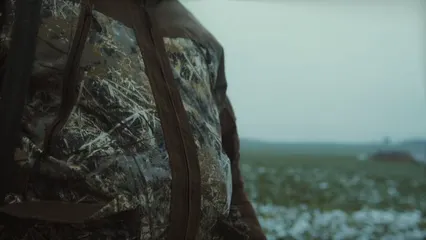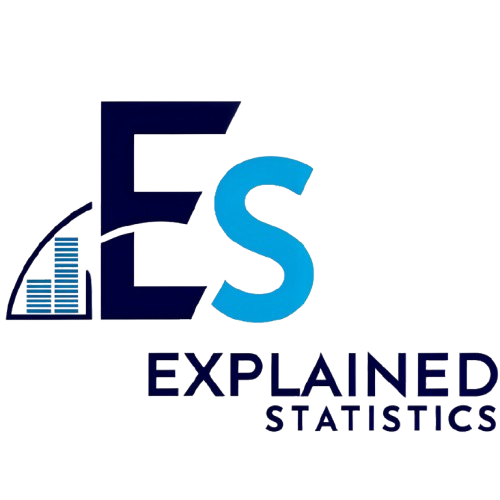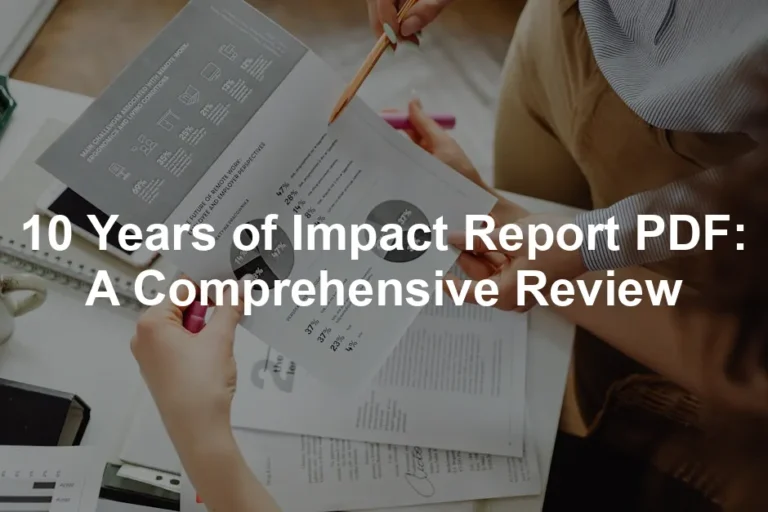Introduction
Colorado’s hunting scene is a treasure trove for big game enthusiasts. With stunning landscapes and diverse wildlife, it’s a dream come true for hunters. Elk, deer, and antelope reign supreme in this majestic state, attracting both residents and non-residents alike.
The draw system is essential for obtaining hunting licenses in Colorado. It ensures that the limited resources are allocated fairly among the eager applicants. For elk, deer, and antelope, this system dictates who gets to hunt and when, making it crucial for both seasoned hunters and newcomers.
Understanding draw statistics is like having a secret weapon. By analyzing these numbers, hunters can make informed decisions about where and when to hunt. It helps in planning successful outings, ensuring that you aren’t just wandering aimlessly into the wilderness. So, whether you’re a first-time applicant or a seasoned veteran, mastering draw statistics can significantly enhance your hunting experience.
And speaking of hunting gear, having the right Hunting Backpack can make your trips much more enjoyable. After all, nobody wants to lug around their gear like a pack mule! A good backpack keeps your hands free for that sweet, sweet bow or rifle.

Understanding the Draw System
What is the Draw System?
In Colorado, the draw system is the backbone of hunting license allocation. It’s a process that allows hunters to apply for limited licenses each year, ensuring a sustainable approach to wildlife management. There are three primary types of licenses available: Limited Licenses, Over-the-Counter (OTC) Licenses, and Leftover Licenses.
Limited Licenses require hunters to enter a draw, as they are capped based on population and management goals. These licenses are highly sought after due to their limited availability. On the other hand, OTC Licenses are available without the need for a draw, offering more flexibility. Lastly, Leftover Licenses are the remaining licenses that didn’t get drawn in the initial application period, providing a second chance for hunters.
Importance of Preference Points
Preference points are the golden tickets in Colorado’s hunting draw system. Each time a hunter applies for a limited license and doesn’t draw their first choice, they earn a point. This point can then increase the odds of drawing more desirable licenses in future years.
However, there’s a catch—Preference Point creep. This phenomenon occurs when the number of applicants increases faster than the available licenses, leading to a situation where more points are needed to secure a tag. It’s like running a race where the finish line keeps moving further away! Understanding this concept is vital for hunters aiming to secure their dream hunts in Colorado.
Grasping how the draw system operates and the role of preference points can turn the tide in your favor. With this knowledge, you’ll be better equipped to navigate Colorado’s hunting landscape and maximize your chances of success. And remember, a good Hunting Knife is essential for processing your game efficiently!

Colorado Draw Statistics Overview
Understanding Colorado’s draw statistics is essential for hunters aiming to secure their licenses. These statistics provide vital insights into hunting trends, competition, and potential success rates. Let’s break down the various types of draw reports, key statistics to consider, and some recent example statistics to help you navigate the hunting landscape effectively.
Types of Draw Reports
Draw Recap Reports
These reports are the holy grail for hunters. They combine pre-draw and post-draw information, creating a comprehensive overview of the draw process. You can find available licenses, the number of applicants, and success rates all neatly packaged. Imagine having a crystal ball that tells you how many hunters applied for elk in your favorite unit and how many actually got a tag! These reports serve as guidelines for future applications, helping you strategize better.
The Draw Recap also shows how many preference points were required to draw specific licenses. You can find these reports on the Colorado Parks and Wildlife website, with the latest versions providing a decade’s worth of historical data.
Drawn Out Reports
These reports dig deeper into the competition aspect. They indicate the last point or choice at which a license was drawn for individual hunt codes. Want to know how tough it is to snag a tag for that coveted elk hunt? This report will give you an idea of the competition in various units, helping you gauge your chances based on past draw results.
Secondary Draw Recap Reports
Think of these as your backup plan. They summarize the secondary draw process, offering insights into licenses that remain after the primary draw. If you weren’t lucky the first time, these reports provide a second chance to grab a tag. They display pre-draw and post-draw data similar to the primary Draw Recap Reports, making it easier to find alternate hunting opportunities.
Key Statistics to Consider
When analyzing draw statistics, several critical metrics should be front and center:
- Total Licenses Available per Species
Understanding the number of licenses available for elk, deer, and antelope is crucial. This number fluctuates annually based on wildlife population management goals. A higher number of licenses generally indicates more opportunities for hunters. - Number of Applicants per Unit and Species
This statistic reveals how competitive specific units are. If a unit has a high number of applicants but only a few licenses, your odds of drawing a tag decrease. Knowing this helps you make informed decisions about where to apply. - Success Rates Based on Preference Points
Success rates are your best friend when applying for licenses. Typically, the more preference points you have, the higher your chances of drawing a desirable license. Reports often break down successful draws by the number of preference points, giving you a clear picture of what it takes to succeed.

Example Draw Statistics
To illustrate the trends in draw statistics, let’s look at some recent data from the 2023-2024 draw reports.
- Elk Draw Statistics
Total Licenses Available: 25,000
Total Applicants: 95,000
Success Rate with 0 Preference Points: 10%
Success Rate with 5 Preference Points: 35% - Deer Draw Statistics
Total Licenses Available: 32,000
Total Applicants: 75,000
Success Rate with 1 Preference Point: 20%
Success Rate with 6 Preference Points: 40% - Antelope Draw Statistics
Total Licenses Available: 15,000
Total Applicants: 50,000
Success Rate with 2 Preference Points: 25%
Success Rate with 7 Preference Points: 45%
These statistics reflect the competition and the importance of accumulating preference points over the years. And while you’re at it, don’t forget the importance of Hunting Boots. Comfortable feet make for a happy hunter!

Visualizing this data can be even more helpful. Here’s a simple table to summarize:
| Species | Total Licenses | Total Applicants | Success Rate (0 Points) | Success Rate (5 Points) |
|---|---|---|---|---|
| Elk | 25,000 | 95,000 | 10% | 35% |
| Deer | 32,000 | 75,000 | 20% | 40% |
| Antelope | 15,000 | 50,000 | 25% | 45% |
By analyzing these statistics, hunters can better navigate their applications and enhance their chances of a successful hunt in Colorado. For more detailed insights, consider checking out the colorado hunting statistics.
Understanding the nuances of hunting statistics can greatly improve your chances of success. Learn more about Colorado hunting statistics.

In conclusion, understanding draw statistics is paramount for any serious hunter. With the right information in hand, you can plan your hunting trips more effectively and increase your odds of drawing a coveted tag. And speaking of planning, you might want to consider a Trail Camera to scout your hunting locations!

Species-Specific Insights
Elk Draw Statistics
Elk hunting in Colorado is more than just a pastime; it’s a rite of passage for many. With breathtaking scenery and a robust elk population, the state draws hunters from across the nation. The statistics surrounding elk draws can give you a competitive edge in this thrilling pursuit.
Each year, Colorado Parks and Wildlife (CPW) releases comprehensive draw statistics. These reports detail the number of licenses available in various management units, how many hunters applied, and the success rates based on preference points.
In recent years, the overall elk population has seen fluctuations, impacted significantly by environmental factors. One notable change is the reintroduction of wolves, which has stirred debate among hunters and conservationists alike. This predator presence could alter elk behavior, potentially leading to changes in migration patterns and population dynamics. However, reports suggest the elk population remains stable, at least for now.
When it comes to success rates, they vary widely by unit. For instance, in Unit 61, one of the most popular and coveted areas, hunters typically need around 24-25 preference points to stand a decent chance at drawing a license. In contrast, other units may only require a handful of points, making them more accessible.
Understanding which units have higher success rates is crucial. Many hunters are drawn to areas with lower competition and higher success rates, such as Units 40 and 76, which often show promising results while requiring fewer points.
As we look at recent draw statistics, the numbers tell an interesting story. For the 2023-2024 season, approximately 25,000 elk licenses were available, with 95,000 applicants vying for them. A hunter with zero preference points had about a 10% chance of success, while those with five points enjoyed a more favorable 35% success rate.
This data illustrates the importance of accumulating preference points. If you aim for a successful elk hunt, starting early in your application journey is key. For further insights, check out the colorado elk hunting statistics. And don’t forget to gear up with some quality Elk Hunting Gear!

Elk hunting requires strategic planning and understanding of the statistics involved. Explore more about Colorado elk hunting statistics.
Deer Draw Statistics
Deer hunting in Colorado also offers exciting opportunities, although the draw statistics differ from elk. The deer population is generally more stable, which can lead to different draw dynamics.
In the 2023-2024 hunting season, there were about 32,000 licenses issued for deer, with approximately 75,000 applicants. This makes the competition slightly less fierce compared to elk. For instance, a hunter with one preference point had a 20% chance of success, while those with six points saw their success rate rise to 40%.
Certain units, such as Unit 2, have gained popularity due to their historical success rates. Hunters flock to these areas, leading to a competitive draw environment. The historical success rates in these units often influence the number of applicants, creating a cycle of popularity that hunters need to navigate wisely.
While elk may capture all the headlines, deer hunting provides its own unique thrills, especially for those who master the draw system and understand the statistics behind it. And to make your deer hunting experience even better, consider getting some Deer Hunting Gear to ensure you’re equipped for success!

Antelope Draw Statistics
Antelope hunting in Colorado is another thrilling experience, and its draw statistics add a different flavor to the equation. While not as popular as elk or deer, antelope hunting has its dedicated enthusiasts.
For the 2023-2024 season, around 15,000 antelope licenses were available, with about 50,000 applicants. The success rates vary significantly; with two preference points, hunters had a 25% chance of drawing a license, while those with seven points enjoyed a 45% success rate.
What sets antelope hunting apart is the unique terrain and the animal’s behavior. Antelope are known for their speed and keen eyesight, making them a challenging target. The draw statistics reflect not just the number of hunters but the specific skills required to succeed in these hunts. And if you’re heading out for antelope, a good set of Hunting Binoculars will help you spot them from a distance!

Antelope hunts often allow hunters to experience different landscapes, from wide-open plains to rugged hills. This diversity can make antelope hunting a refreshing alternative to the more traditional elk or deer pursuits.
Additional Species
While elk, deer, and antelope dominate Colorado’s hunting scene, other big game species also have draw statistics worth noting.
For instance, bear licenses are increasingly popular, and in the 2023-2024 season, the bear population is robust, allowing for a good number of licenses. Similarly, moose and bighorn sheep draw statistics indicate stable populations, though these hunts require specialized knowledge and skill due to their limited availability and higher competition.
In summary, understanding the draw statistics for elk, deer, antelope, and other species is crucial for hunters looking to optimize their chances of success. By analyzing these numbers, you can make informed decisions about where and when to apply, ensuring your next hunting adventure in Colorado is both successful and fulfilling. And don’t forget to check out a good Wildlife Field Guide to help identify what you might encounter while out there!

Strategies for Successful Draw Applications
Navigating Colorado’s hunting draw system can feel like trying to solve a Rubik’s cube blindfolded. Fear not! We’ve got you covered with some tried-and-true strategies that will help you secure those coveted limited licenses and make the most of your preference points.
Applying for Limited Licenses
First things first, let’s break down the application process for limited licenses. Start by visiting the Colorado Parks and Wildlife website. There, you can find the big game license application portal.
- Create an Account: If you’re new to the game, set up an account. This will be your hunting HQ for applications and preference points.
- Select Your Species: Choose from elk, deer, or antelope. Each species has its own unique draw odds, so pick wisely.
- Choose Your Hunt Code: Every hunt has a specific code. Research which codes correspond to your desired hunting unit. Use draw reports to figure out where licenses are more readily available.
- Application Preferences: You can list up to four hunt choices. If your first choice is a no-go, your application will automatically roll to your second choice. This is where strategic thinking pays off.
- Submit Your Application: Double-check everything before hitting submit. You don’t want to find out later that you applied for the wrong code!
- Pay the Application Fee: This isn’t a free ride. Fees vary depending on species and license type, so be prepared to fork over some cash.

Now, let’s talk about selecting units based on draw statistics. The key here is to analyze past draw reports. Focus on units with high success rates and reasonable applicant numbers. Avoid the units with the most applicants unless you have a boatload of preference points. Remember, competition can be fierce, but knowledge is power!
Utilizing Preference Points
Preference points are the golden tickets of the draw system. They significantly enhance your chances of snagging a limited license. Here’s how to accumulate and utilize them effectively:
- Apply Every Year: Even if you don’t intend to hunt, apply for preference points. It’s like saving a few coins in a piggy bank for a future adventure.
- Keep Track of Your Points: Monitor your points yearly. If you’re aiming for a specific unit, know how many points you’ll need to draw.
- Plan Ahead: Think multiple years out. If you want to hunt in a coveted unit, start building points as soon as possible. This isn’t a sprint; it’s a marathon.
- Use Your Points Wisely: When you reach the required number of points, don’t hesitate to use them! Aim for high-demand hunts where your points will give you an edge.
- Stay Informed: Be aware of preference point creep. If more hunters are applying, it may take more points to draw. Adjust your strategy accordingly!

Alternative Options
Sometimes, despite your best efforts, the draw doesn’t go your way. That’s where alternative options come in handy:
- Over-the-Counter (OTC) Licenses: In some units, OTC licenses are available. These can be a lifesaver for those who want to hunt without the hassle of a draw. However, prepare for larger crowds; it’s a bit like Black Friday shopping!
- Leftover Licenses: After the primary draw, there may be leftover licenses. These are typically less sought after but can still offer excellent hunting opportunities. Check the Colorado Parks and Wildlife website for updates on what’s available.
- Secondary Draw: If you didn’t draw your first choice, the secondary draw might be your second chance. Keep an eye on the timeline and apply quickly to grab leftover licenses before they’re gone!
- Group Applications: Consider applying with friends or family. This can increase your chances, especially if you’re all willing to hunt the same unit.
With these strategies in your arsenal, you’re well-equipped to tackle Colorado’s draw system. Whether you’re applying for limited licenses, maximizing your preference points, or exploring alternative options, staying proactive and informed will set you on the path to a successful hunting season. And don’t forget to bring along a First Aid Kit for Outdoors—safety first!

Conclusion
Understanding Colorado draw statistics is crucial for hunters. These statistics serve as a roadmap to navigate the complex draw system, ensuring hunters can make informed decisions. By analyzing draw data, you can identify trends, gauge competition, and increase your chances of drawing that coveted tag.
For many, hunting is not just a hobby; it’s a passion. The thrill of tracking elk or deer in Colorado’s breathtaking wilderness is unmatched. However, without a solid grasp of draw statistics, you might find yourself wandering aimlessly, wondering why you didn’t draw a license.
Equipped with the right knowledge, you can plan your hunts more effectively, optimizing your preference points for future applications. This strategic approach can transform your hunting experience from mere chance to calculated success. And while you’re planning, consider a Portable Power Bank to keep your devices charged during your adventures!

Don’t forget to stay updated on any changes to the draw system and regulations. Colorado Parks and Wildlife frequently revises rules and statistics, and being in the know will keep you ahead of the game. So, keep your eyes peeled for the latest information, and may your next hunt be both successful and memorable!
FAQs
What are preference points, and how do they work?
Preference points are a way to improve your chances of drawing a limited hunting license in Colorado. When you apply for a limited license and don’t draw your first choice, you earn a preference point. Accumulating these points increases your odds in future draws. The more points you have, the better your chances of getting a license in high-demand areas. Just remember, if you draw your first choice, your points reset to zero!
How can I check my draw results and preference point status?
To check your draw results and preference point status, visit the Colorado Parks and Wildlife (CPW) website. They provide an online system where you can input your information and view your results. Typically, results are published in early June for the primary draw. Make sure to keep an eye on the official CPW site for the latest updates!
What should I do if I don’t draw a license?
If you don’t draw a license, don’t despair! You have several options. First, you can apply for leftover licenses that might still be available after the primary draw. These licenses are typically less competitive. Alternatively, consider purchasing an Over-the-Counter (OTC) license if applicable in your desired unit. This way, you can still enjoy a hunt, even if it wasn’t your first choice.
Are there any changes to the draw system for the upcoming season?
Yes, changes to the draw system can happen annually. For the most current updates, check the Colorado Parks and Wildlife website or read the annual Big Game brochure. Recent changes might include adjustments to the percentage of non-resident licenses, new hunt codes, or modifications to preference point allocation. Staying informed is crucial for planning your hunting strategy effectively.
How do I interpret draw statistics reports?
Interpreting draw statistics reports can seem daunting, but it’s manageable! Start by looking at the total licenses available for each species. Next, check the number of applicants and the success rates based on preference points. Reports often show how many points were needed to draw specific licenses. Understanding these numbers will help you gauge the competitiveness of different hunt codes and plan your future applications wisely. Don’t forget to refer to the glossary provided with the reports for any unfamiliar terms!
Please let us know what you think about our content by leaving a comment down below!
Thank you for reading till here 🙂
All images from Pexels




